If you’ve ever cooked bacon, sausage, or any other fatty foods, you know the struggle of trying to clean up the grease splatters. Not only is it difficult to remove, but it can also damage your kitchen wall over time. In this article, we will discuss some tips and tricks for how to protect your kitchen wall from grease. We’ll also answer some common questions about this topic. So read on for all the information you need to keep your kitchen looking good!
What causes grease in your kitchen?
There are many factors that contribute to grease in your kitchen. One of the most common is cooking. When you cook, the oils and fats from your food can splatter and create a greasy mess on your walls.
Other causes of grease in your kitchen include:
- Dirty dishes left in the sink
- Food spills
- Grease build-up from cooking
All of these factors can create a greasy mess on your walls that is difficult to clean up.
How to keep your kitchen walls clean
The kitchen is one of the most used rooms in the house. It’s also one of the most likely places for grease and grime to build up on walls. Grease is a tricky substance to get rid of, and if it isn’t properly removed, it can cause long-term harm to the walls.
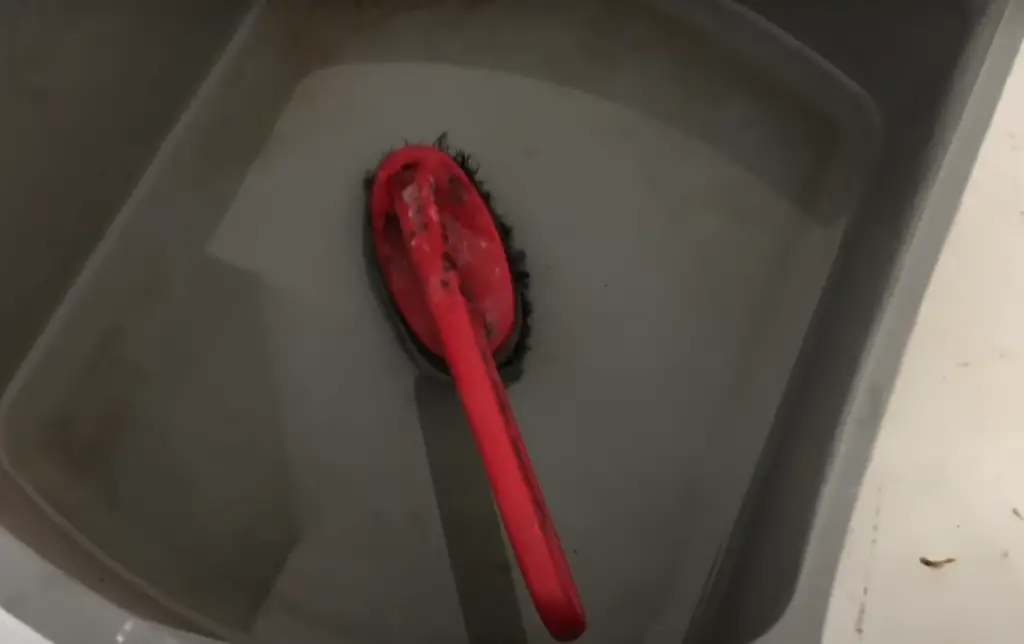
Here are some of our best recommendations for keeping your kitchen walls clean.
Use Vinyl Wallpaper in Your Kitchen
Plus, it comes in a variety of colors and patterns, so you can find the perfect look for your kitchen.
Wiping down your walls with a damp cloth after cooking is one of the best ways to protect them. Make sure you do this every time you cook to get rid of any grease or food splatters before they have a chance to harden.
Choose a Clean-Friendly Paint That’s Simple to Remove
If you have a kitchen that is prone to grease and other splatters, you may want to consider using oil-based paint. These paints are easier to clean than water-based paints.
There are a few things to keep in mind when choosing oil-based paint for your kitchen. First, it is important to select a paint that has a high gloss finish. This will make it easier to wipe down the walls and get rid of any grease or dirt that has been splattered on them.
Second, you’ll need to prime the wall before applying oil-based paint.
Third, before you paint the walls, you’ll need to clean them. Oil-based paints are more difficult to remove than other types of paint.
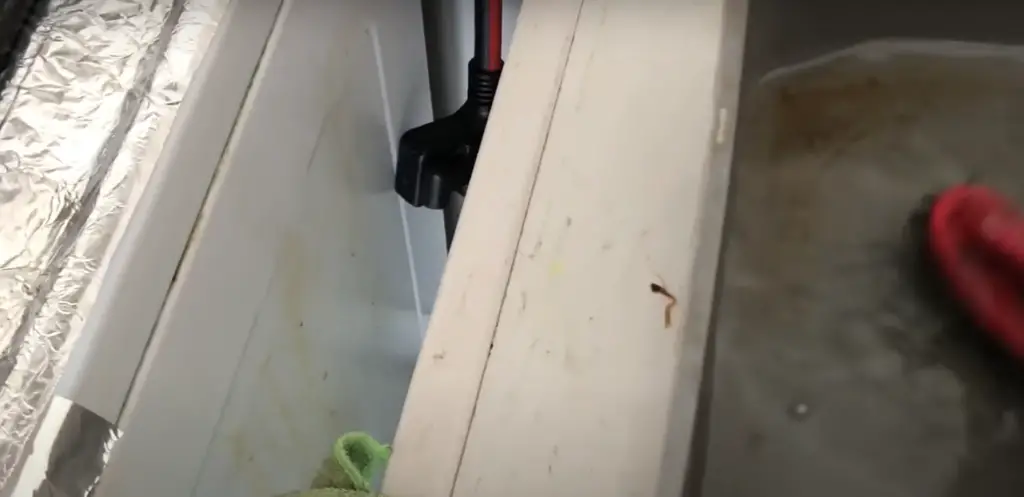
Fourth, you should always paint in a well-ventilated area. This is due to the fact that oil-based paints emit toxic fumes, which can be detrimental to your health.
Fifth, you should avoid using oil-based paint on areas of the wall that are susceptible to grease or food splatters. These areas will require a different type of paint that is specifically designed for this purpose.
Use a primer under top coat
This will create a barrier between the paint and the grease, making it much easier to clean up any spills or splatters. Be sure to apply the primer evenly and allow it to dry completely before adding the topcoat.
Another option is to use a latex-based paint with a high gloss finish. This type of paint is more resistant to stains and easy to wipe down. However, it can be difficult to apply evenly and may require multiple coats. If you go this route, be sure to sand in between each coat for the best results.
If you follow these tips, you will be able to create a kitchen that is both beautiful and functional. With the right paint, your kitchen will be easy to clean and will resist staining.
And with the right ventilation, you will be able to keep your kitchen well-ventilated and free of harmful fumes.
Use a Kitchen Wall Tile Instead of Drywall
If you’re looking for an extra layer of protection against grease, opt for a kitchen wall tile instead of drywall. Wall tiles are easy to clean and can withstand high temperatures, making them the ideal material for protecting the kitchen wall from grease splatters. Plus, they add a touch of style to your kitchen!
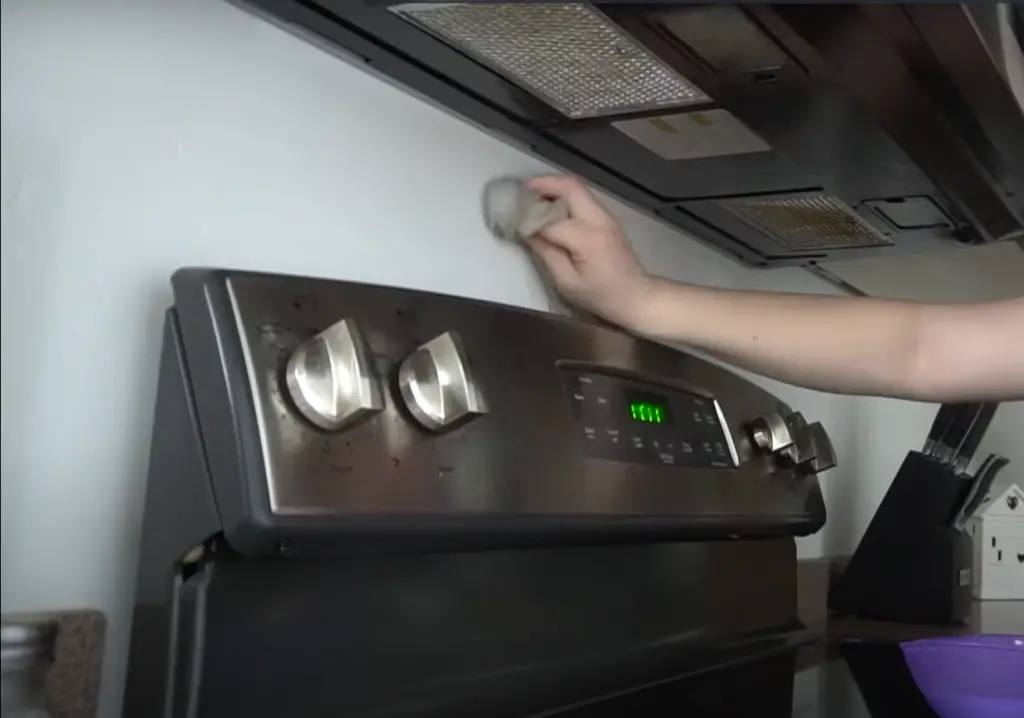
Here are a few tips on how to choose the right tile for your kitchen:
Pick a tile that’s easy to clean. A glossy finish will repel water and make cleaning up spills a breeze.
Choose a tile that’s heat resistant. Kitchen walls can get pretty hot, so it’s important to pick a tile that won’t crack or warp under high temperatures.
Then, follow these installation tips to ensure the kitchen wall tile lasts for years to come:
- Apply a layer of thinset mortar to the wall with a trowel.
- Lay the tiles in rows, starting at the bottom of the wall and working your way up.
- Use a level to make sure the tiles are even as you go.
- Once all the tiles are in place, grout the joints with a matching color.
- Allow the grout to dry for 24 hours before using the kitchen.
Clean the Grease off with this Mixture
You will need:
- A bowl
- Warm water
- Dish soap
- A sponge or cloth
- Baking soda (optional)
Start by mixing together dish soap and warm water in a bowl. If you want, you can add some baking soda to the mixture as well. This will help to remove any tough stains. Once you have your mixture ready, dip your sponge or cloth into it and start scrubbing the grease off of your kitchen wall. Be sure to clean the area well with clean water after rinsing it to remove any soap residue. Repeat this process as necessary until the grease is gone!
Apply this paste to the grease-stained area and let it sit for about an hour. After an hour has passed, scrub the area with a sponge or cloth dipped in warm water. The vinegar and baking soda mixture should break down the grease, making it easy to wipe away. After rinsing the space, clean it again with fresh water and admire your gleaming kitchen wall!
Use a Product like TSP
TSP, or trisodium phosphate, is a heavy-duty cleaner that can be used on a variety of surfaces – including walls! When mixed with water, TSP creates a solution that can break down even the toughest grease stains. To use TSP on your kitchen walls, simply mix it with water according to the manufacturer’s instructions. To clean a stained area, apply some cleaning solution to a sponge or cloth and scrub the stain away. Be sure to rinse the area afterwards with clean water to remove any residue.
If you’re looking for an all-natural solution, vinegar is your best bet! Vinegar is a powerful cleaning agent that can cut through the grease with ease. To use vinegar on your kitchen walls, simply mix equal parts of vinegar and water together in a bowl. Once you have your mixture ready, apply it to the grease-stained area with a sponge or cloth and scrub away. Be sure to rinse the area afterwards with clean water to remove any residue. [1]
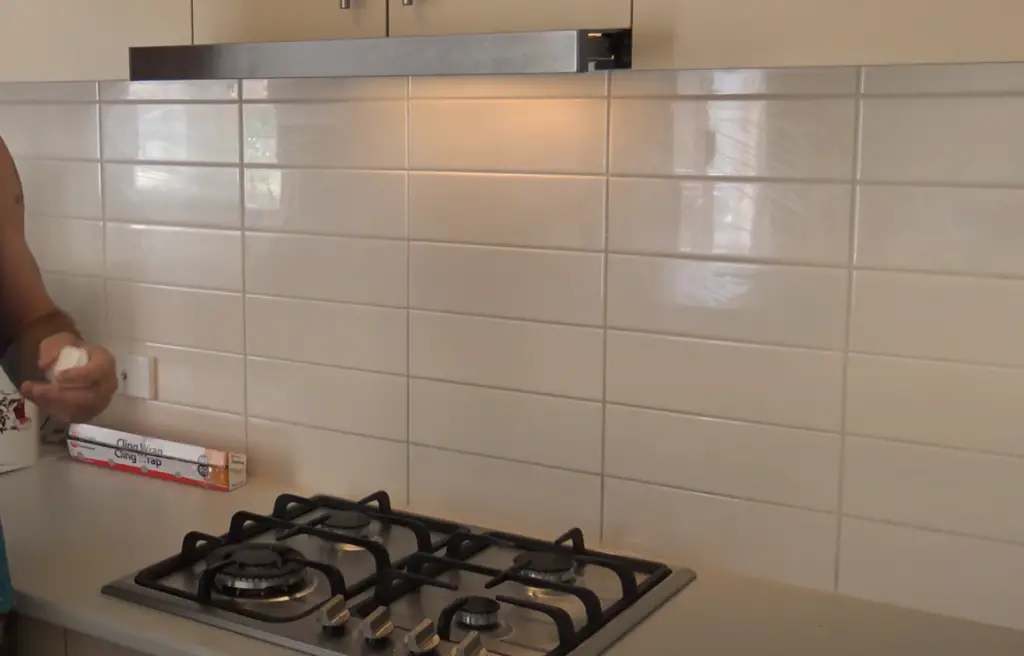
No matter what method you choose, regular cleaning will go a long way in preventing grease build-up on your kitchen walls. So don’t be afraid to get scrubbing! Your kitchen walls are one of the most important surfaces in your home – they’re where you prepare food, after all!
With these tips, you’ll be well on your way to keeping your kitchen walls clean and grease-free!
Comparison of Indicators for Protecting Kitchen Wall From Grease
The kitchen is a space prone to grease and oil splatters, which can leave unsightly stains on the walls. To maintain a clean and appealing kitchen environment, it is essential to protect the kitchen wall from grease effectively. This table compares various indicators and methods for safeguarding your kitchen wall from grease, allowing you to make an informed decision based on your needs.
The table below presents a comparison of different indicators for protecting kitchen walls from grease. It includes the effectiveness of each method, the ease of implementation, and the cost involved. The higher the rating, the better the method performs in each category.
| Method | Effectiveness | Ease of Implementation | Cost |
|---|---|---|---|
| Tile Backsplash | 9.5 | 8.0 | 7.5 |
| Stainless Steel Panels | 9.0 | 9.0 | 8.5 |
| Paint with High-Gloss Finish | 7.5 | 9.5 | 6.0 |
| Wipeable Wallpaper | 7.0 | 8.5 | 5.5 |
| Acrylic Splash Guard | 8.5 | 7.5 | 7.0 |
In this table, each method is evaluated on three indicators: effectiveness, ease of implementation, and cost. The effectiveness rating represents how well the method protects the kitchen wall from grease, with higher ratings indicating better protection. Ease of implementation assesses the simplicity and convenience of installing or applying the protective measure. The cost rating reflects the relative expense associated with each method, with lower ratings indicating more affordable options.
Please note that the ratings in the table are based on a comparative scale and are subjective. The values provided are for illustrative purposes only and may vary depending on personal preferences and specific product variations.
FAQ
How do I protect my walls next to the stove?
The first step is to identify the problem areas in your kitchen. Do you have a lot of grease splatter on your walls? If so, you’ll want to focus on those areas.
Next, you’ll need to choose a material that will be effective at protecting your wall from grease. You can find specialized paints that are designed for this purpose, or you can use something like tile or stainless steel.
Once you’ve chosen a material, it’s time to get started on protecting your wall! If you’re using paint, simply apply it to the area and allow it to dry. If you’re using tile or stainless steel, follow the instructions that come with the product. [2]
With just a little bit of effort, you can keep your kitchen walls looking clean and new – no matter how much cooking you do!
Why are my kitchen walls greasy?
There are a few reasons why your kitchen walls might be greasy. The most frequent reason is that cooking oils and fats can accumulate on surfaces over time. If you don’t clean your walls regularly, the grease can start to form a sticky film.
Another reason could be that you’re using too much oil when cooking. When heated, oil releases particles into the air that can eventually settle on surfaces like walls and cabinets. If you notice your walls are particularly greasy after cooking, try using less oil next time. [3]
Whatever the reason for your greasy walls, there are a few things you can do to protect them from further damage. Here are our top tips:
- Wipe down your walls with a damp cloth after cooking. This will help remove any grease that’s already on the surface.
- Use soap and water to wash your walls regularly. You can do this once a week or as needed.
- Apply a grease-resistant coating to your walls. This will create a barrier between the wall and any grease or oil that comes into contact with it.
- Install an exhaust fan in your kitchen to help remove smoke and airborne particles from the air.
What is a good degreaser for kitchen walls?
There are a few different types of degreasers that you can use on your kitchen walls, but the best one to use is a natural degreaser. You can make your own natural degreaser by mixing equal parts water and vinegar. Another option is to purchase a natural degreaser from the store.
Once you have your degreaser, simply spray it onto the affected area and let it sit for a few minutes. Then, wipe it away with a clean cloth or sponge.
You may need to repeat this process a few times to get rid of all the grease buildup on your kitchen wall. But once you do, you’ll be left with a clean and grease-free surface!
If you have any stubborn grease stains, you can try using a toothbrush or other scrub brush to remove them. Just be sure to rinse the area well afterwards so that no vinegar residue is left behind.
Assuming you don’t want to use a natural degreaser, there are a few different types of chemical degreasers that you can use. The most common type of degreaser is an alkaline degreaser, which is usually made with sodium hydroxide or potassium hydroxide.
Alkaline degreasers are very effective at breaking down grease and grime, but they can also be very harsh on your skin and eyes. If you decide to use an alkaline degreaser, be sure to wear gloves and safety goggles to protect yourself.
Another option is to use a cream-based degreaser. These degreasers are usually made with solvents like ethyl alcohol or isopropyl alcohol. Cream-based degreasers are effective at breaking down grease, but they can also be very drying to your skin. If you decide to use a cream-based degreaser, be sure to wear gloves and apply a moisturizer to your skin afterwards. [4]
Can a stove go against a wall?
Stove placement is important for two reasons: safety and efficiency. The wall behind a stove needs to be protected from heat and grease. There are a few different ways to do this, and the best option depends on the layout of your kitchen.
If possible, the best way to protect your wall is to place the stove in an island or peninsula. This way, there’s no wall behind the stove at all. If you don’t have this option, though, you’ll need to take some extra steps to make sure your wall is well-protected.
One option is to install a backsplash behind the stove. This can be made out of tile, metal, or another material that can withstand heat and splatters. Another option is to install a range hood that will vent steam and smoke away from the wall.
Either way, it’s important to make sure that your wall is protected so that you can avoid costly repairs down the road.
What are some effective methods to protect kitchen walls from grease?
To protect kitchen walls from grease, you can consider implementing the following methods:
- Install a backsplash: Adding a backsplash made of materials such as tile, stainless steel, or glass can provide a protective barrier against grease splatters and make it easier to clean.
- Apply a grease-resistant paint or primer: Using a specialized paint or primer formulated to resist grease can help prevent it from penetrating the walls and make cleaning easier.
- Use a splatter guard: Placing a splatter guard or a heat-resistant panel on the wall behind the stove can effectively block grease splatters and minimize their impact on the walls.
- Regularly clean the walls: Establish a routine of wiping down the walls with a grease-cutting cleaner or a mixture of warm water and dish soap to remove any grease buildup.
What types of materials are suitable for a grease-resistant backsplash?
When choosing a backsplash material that is resistant to grease, you have several options:
- Tile: Ceramic, porcelain, or glass tiles are popular choices for backsplashes as they are durable, easy to clean, and provide excellent protection against grease stains.
- Stainless steel: Stainless steel is not only sleek and modern but also highly resistant to grease and heat. It’s a great option for a contemporary kitchen aesthetic.
- Glass: Glass backsplashes are not only stylish but also resistant to stains and grease. They are relatively easy to wipe clean and can add a reflective quality to your kitchen.
How can I properly clean a kitchen wall to remove grease?
To effectively clean grease from your kitchen walls, follow these steps:
- Prepare a cleaning solution: Mix warm water with a small amount of dish soap or a grease-cutting cleaner. Alternatively, you can use a solution of vinegar and water.
- Protect nearby surfaces: Place towels or plastic sheets on the countertop and floor to prevent any cleaning solution or grease from dripping onto them.
- Dampen a sponge or cloth: Dip a sponge or cloth into the cleaning solution and wring out any excess liquid.
- Gently scrub the wall: Starting from the top, work your way down, applying light pressure to the greasy areas. Be careful not to scrub too hard, as it may damage the paint or finish.
- Rinse and dry: Once you’ve removed the grease, rinse the wall with clean water and dry it thoroughly with a clean towel or cloth.
Are there any preventative measures I can take to minimize grease splatters on kitchen walls?
Absolutely! Here are some preventive measures to help minimize grease splatters on your kitchen walls:
- Use a splatter screen: Place a splatter screen or mesh guard over your pans while cooking to prevent hot grease from splattering onto the walls.
- Adjust cooking temperatures: Lowering the heat slightly can help reduce the amount of grease that splatters during cooking.
- Keep pots and pans covered: Using lids while cooking can significantly reduce the likelihood of grease splatters reaching the walls.
- Regularly clean the stovetop: A clean stovetop with properly functioning burners is less likely to produce excessive grease splatters.
- Utilize proper ventilation: Ensure your kitchen has adequate ventilation, such as an exhaust fan or range hood, to help remove steam, smoke, and airborne grease particles.
Useful Video: How to clean cooking grease from kitchen wall
Conclusion
If you follow the tips in this article, you should be able to keep your kitchen wall free from grease and grime. Regular cleaning and proper maintenance will go a long way in protecting your investment. Don’t wait until it’s too late to take action – a little bit of prevention can save you a lot of time and money in the long run. Thanks for reading!
References:
- https://diybuster.com/protect-kitchen-wall-from-grease/
- https://dropbymyhouse.com/how-to-protect-wall-next-to-stove/
- https://www.skylarglobal.com/blogs/news/why-is-everything-greasy-and-sticky-in-the-kitchen-and-how-to-degrease-it
- https://www.prolinerangehoods.com/blog/best-kitchen-degreasers/

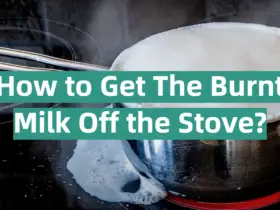
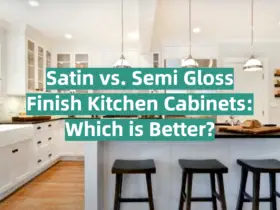
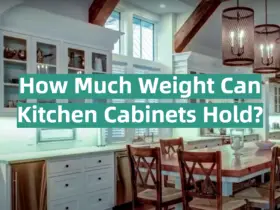
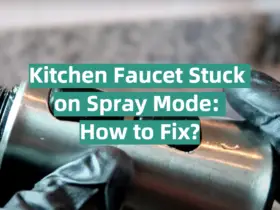
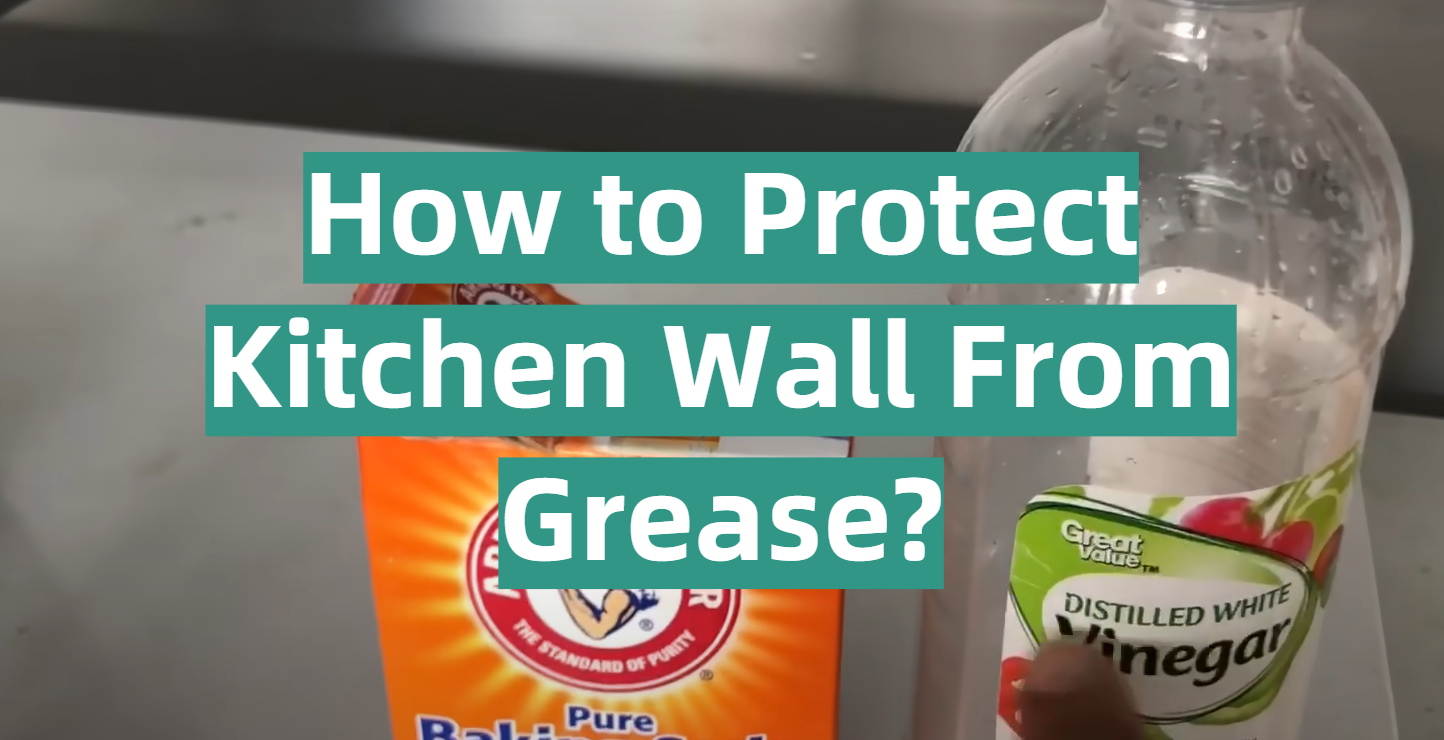
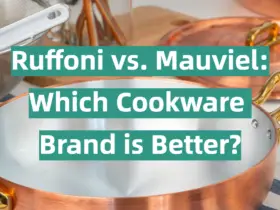
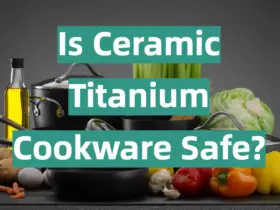
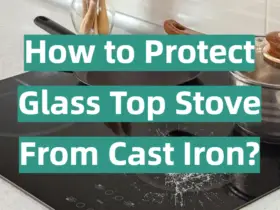

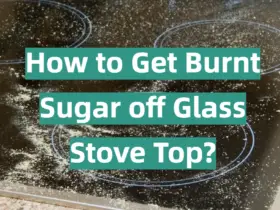
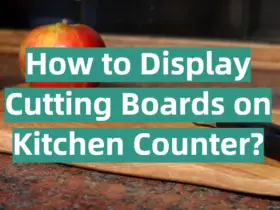

Leave a Reply